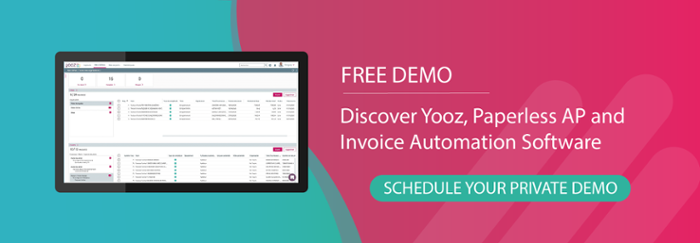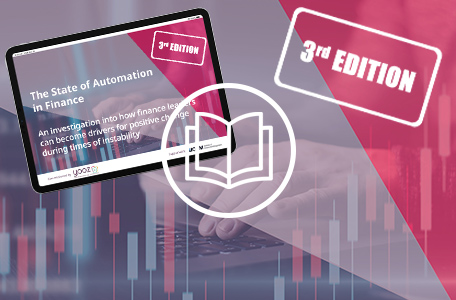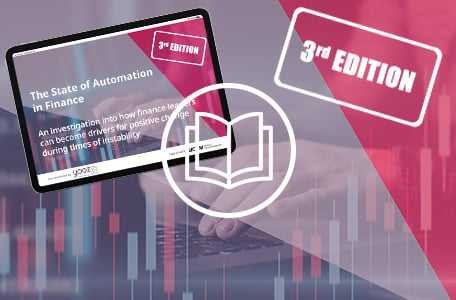The process of matching Purchase Orders (POs) is crucial for effective Accounts Payable (AP) management, enabling businesses to track and manage outstanding invoices and payments owed to vendors or suppliers. By optimizing the workflow with automated invoice processing, companies can reduce costs, improve their financial performance, and better maintain a positive cash flow. And establishing efficient management practices begins right from the start.
Ensuring that all information - especially costs - on vendor invoices align with the agreed-upon contract details in the corresponding Purchase Order (PO) is essential. In the past matching required manual labor from accountants or accounting departments. Fortunately, with advancements in technology such as AP automation, software solutions now streamline the process, eliminating the need for manual intervention and helping to ensure accuracy from the very start.
It doesn't matter whether you operate a small company or a large corporation. Fact is, implementing a reliable PO matching process offers numerous benefits. But what exactly are these benefits? And how can you successfully implement a proven PO matching system?
Here we present a guide to PO matching, providing insights into key benefits and answering frequently asked questions. Whether you are considering automating the process in the near or distant future, this guide will help you to evaluate whether it can benefit your organisation and provide practical steps for implementation.

What is purchase order matching?
When a company procures goods or services from a vendor, a purchase order is created to outline the terms of the transaction. In response, the vendor submits and invoice requesting payment for their products or services. During PO matching, also known as Purchase Order matching, the Accounts Payable department compares the details on both the purchase order and the invoice to ensure that they are consistent and accurate. Any discrepancies or exceptions discovered during the matching process are promptly flagged for further investigation.
Different types of PO matching
Whether done manually or via automation, there are various types of PO matching available to help streamline your Accounts Payable (AP) process. Selecting the most suitable approach for you depends on factors including operational requirements, desired level of accuracy (or just reassurance), and security levels. Let's explore the three major types of PO matching in detail:
2-way matching
This type of matching involves comparing information between the vendor invoice and the Purchase Order (PO). By verifying key details between these two documents, you can ensure that the transaction is accurate.
3-way matching
This type of match incorporates information from the sales or delivery receipt as well as comparing the vendor invoice with the PO. By cross-referencing data from three different sources, the chance of fraudulent activities or errors is significantly reduced. This method adds an extra layer of confidence to the matching process.
4-way matching
Similar to the 3-way matching process, 4-way matching involves comparing information from the PO, vendor or supplier invoice, and the sales or delivery receipt. However, it goes a step further by introducing an additional level of security. In this case the fourth matching step verifies that the correct quantity of the product or service was delivered and accepted. For example, organisations using a 4-way approach will confirm that they have received the correct number of products before payments are sent to the vendor. This thorough validation minimises the risk of discrepancies or unauthorised charges.
Understanding the differences between these types of PO matching helps you to make an informed decision about which approach best aligns with your business requirements. Regardless of whether you prioritise accuracy, fraud prevention, or operational efficiency, implementing the right PO matching method can greatly enhance your AP process.

How do you implement an invoice matching process?
Implementing an efficient and accurate invoice matching - PO matching - process is crucial for organisations to ensure a smooth procurement operation. Here are some effective strategies for implementing an effective PO matching process:
- Automate the PO matching process
To expedite the PO matching process and reduce the amount of manual errors, organisations should consider implementing automation. Using dedicated software or an Enterprise Resource Planning (ERP) system can streamline the matching process by automatically comparing data from all relevant documents. - Two-way matching
This is the most common approach to PO matching. It allows the AP team to verify essential elements such as product descriptions, quantities, prices, and dates to ensure that all the data matches. - Three-way matching
For added control and accuracy, organisations may choose to implement 3-way matching. By confirming that the products or services has been delivered as specified in the PO, the AP department cna ensure that all elements align before settling the invoice. - Four-way matching
For more complex procurement scenarios, organisations may opt for 4-way matching. By adding the verification of the sales receipt or inspection report to the 3-way matching process, organisations can confirm the quality and condition of the received product or service. This allows them to further mitigate risks and ensure that all aspects align before making any payment.
The catch? In a manual-based process, there is a direct correlation between the number of invoices received and the amount of time required to complete the matching process. The greater the number of invoices, the more time is required. More matching that needs done... You get the idea. For this reason, implementing automation in the PO matching process offers several advantages.

The benefits of automating PO matching
Rather than requiring the AP department to manually create, input, and cross-reference important data, automated PO matching uses software. This brings numerous advantages to organisations, including improving accuracy, efficiency, and cost-effectiveness. Here are several ways that automating PO matching can benefit any organisation:
Greater accuracy
Automating the PO matching process reduces the risk of human error associated with manual processing of financial documents. This in turn helps organisations avoid costly mistakes that can impact turnover and require significant - and costly - effort to rectify. For example, research shows that invoice processing blunders can cost businesses approximately $53.50 per document to rectify.
Increased efficiency
Automation enhances efficiency by reducing the need for manual approval and streamlining the overall PO matching process. With automated systems, vendor invoices can be settled more quickly compared to manual AP processes, ensuring timely payment and smoother operations.
Enhanced data validation
Automated PO matching software quickly and automatically validates all data entered into the system, regardless of whether it involves 2-way, 3-way, or 4-way matching. Any errors or discrepancies are automatically flagged, allowing for swift resolution and ensuring accurate matching.
Reduced spending
Automating the PO matching process not only lowers the risk of errors but also reduces the need for manual labor. While automation can't entirely replace human involvement, leveraging technology and automation can lead to substantial savings by minimising manual effort and associated cost. Note that in this case, reduce spending specifically does not refer to reducing the workforce.
Improved employee retention and job satisfaction
Another benefit of automating PO matching is the ability for organisations to use the newfound time to provide employees with more time for additional training in using automation software and other business aspects. This opportunity to upskill contributes to greater employee retention and satisfaction, in addition to allowing employees to focus on more meaningful and strategic tasks.
As you can see automating the PO matching process offers these benefits and more, helping organisations to streamline their operations, enhance accuracy, and improve overall efficiency. By leveraging automated systems to capture and match data from various document formats, organisations can optimise their AP processes and drive better financial management.

How does automated PO matching help prevent fraud and error?
According to the Annual Fraud Report by UK Finance, over £1.2 billion was stolen by criminals through authorised and unauthorised fraud in 2022, equivalent to over £2,300 every minute. In fact, according to the National Crime Agency (NCA), fraud is the most commonly experienced crime in the UK, affecting both consumers and business alike.
As mentioned earlier, automated PO matching significantly enhances accuracy and nearly eliminates the risk of errors by promptly identifying any inconsistencies between data entries, purchase orders, supplier invoices, and receipts. Not only does this help prevent organisations from making mistakes, such as overpaying or underpaying vendors, this process also serves as a powerful tool to detect potential instances of fraud.
Learn more by getting in touch
Whether your aim is to reduce manual labor, mitigate fraud risks, or improve overall operational efficiency, implementing PO matching can help. If you would like to find out more, contact us today or request a private demonstration. Our three-way matching process, integrated within our Automated Invoice Processing system, is ready and waiting to support your organization, ensuring accuracy and compliance throughout the invoice approval process.








